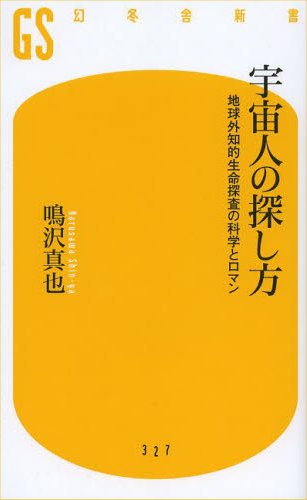by Shin-ya Narusawa
GENTOSHA Shinsho, November 2013
ISBN 978-4-344-98328-1, paperback, 310 pages, 924 Yen

 Publications Department
Publications Department

I should start this review with a disclaimer. I don't read a word of Japanese, and SETI League member Shin-ya Narusawa's new book contains precious few words of English. But it does contain the acronym SETI, sprinkled abundantly throughout its 320 pages. And that's one English word about which, it can be argued, I know a thing or two. Which makes me marginally qualified to review this work, whose artful subtitle (according to Google Translate) is "Science and Exploration for Intelligent Life Beyond Earth."
When Shin-ya first told me he was working on a popular SETI book for adults, I was somewhat surprised. Most of his previous publications have been for younger audiences, not surprising since he is a career schoolteacher. But, when gazing up at the night sky and speculating about extraterrestrial neighbors, don't we all exhibit youthful wonder? So, why shouldn't an author of children's books become a science popularizer?
Thumbing through this small (11 x 17 cm) volume, I was first impressed by how many of its photographs I recognized. There are images of Carl Sagan, and Frank Drake, and Seth Shostak, and Jill Tarter, and Gerry Harp, and Dan Werthunermer, and Doug Vakoch, and -- wait a minute, there's Shin-ya himself, standing next to Claudio Maccone and yours truly! Clearly, the author is well integrated into the worldwide SETI community.
Shin-ya's photos of SETI facilities are as familiar as are those of faces. He includes the customary images of Green Bank and Arecibo and the Allen Telescope Array, as well as the late Big Ear radio telescope (with the inevitable accompanying picture of the familiar Wow! Signal computer printout). Here's a diagram of the solar system, depicting the Habitable Zone, and another of the electromagnetic spectrum, highlighting visible light (but, strangely, not the Water Hole). A table summarizes all significant SETI experiments between 1960 and the present, and another lists nearby sun-like stars with known exoplanets. Pictures of Optical SETI observatories abound, including Narusawa's own facility on his campus. All these are obligatory components of a popular SETI book, recognizable in any language.
If the photos and diagrams are any indication, "How to Find Aliens" is a good introduction to SETI science and history for Japanese audiences. I still wish I could read their language.
email the Webmaster | entire website copyright © The SETI League, Inc.; Maintained by Microcomm this page last updated 14 December 2013 |
Top of Page |